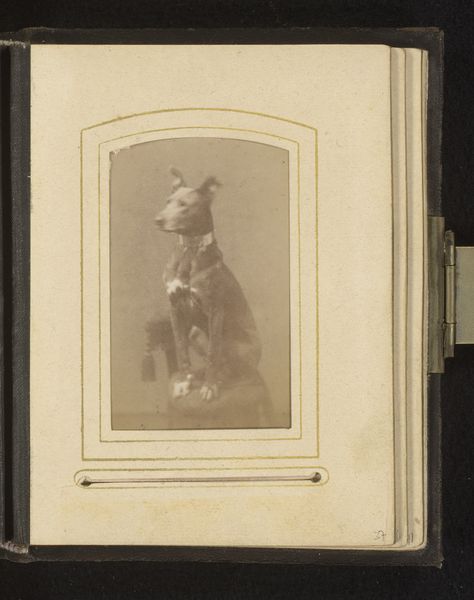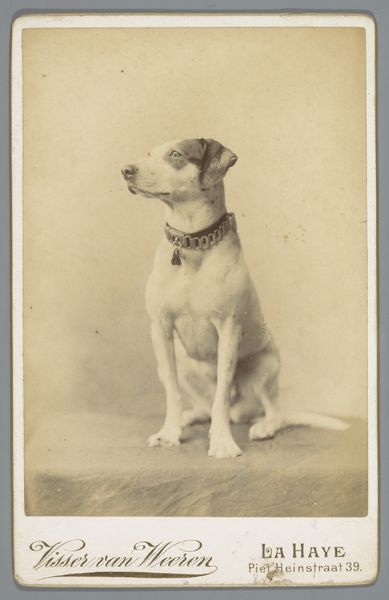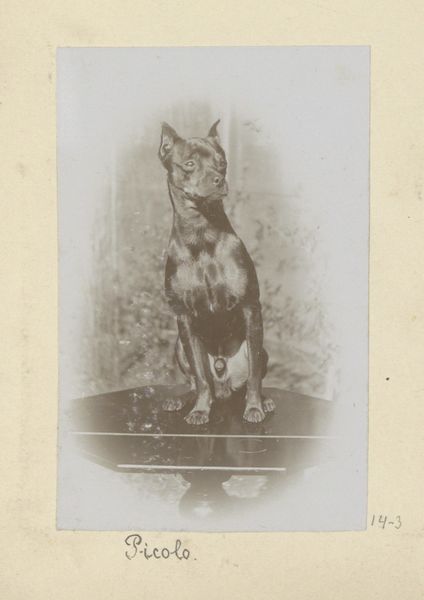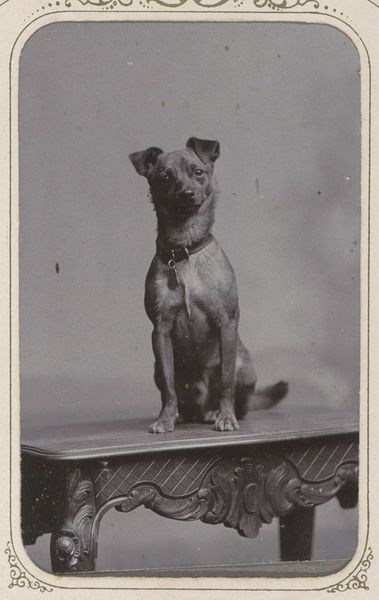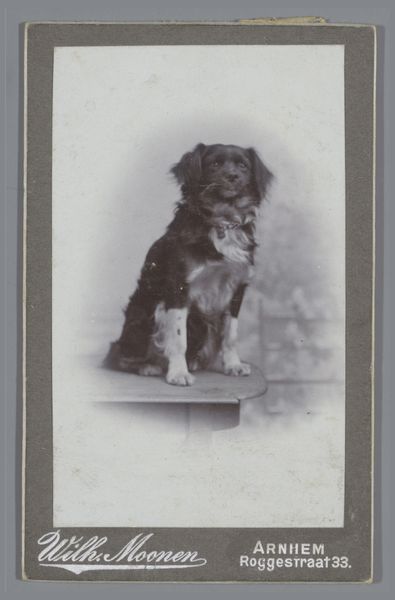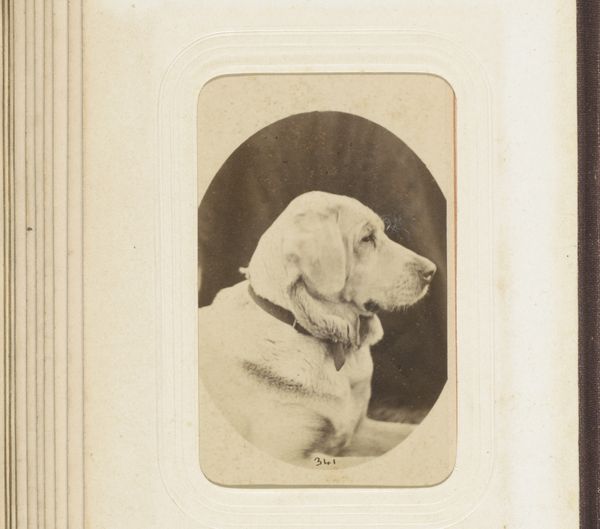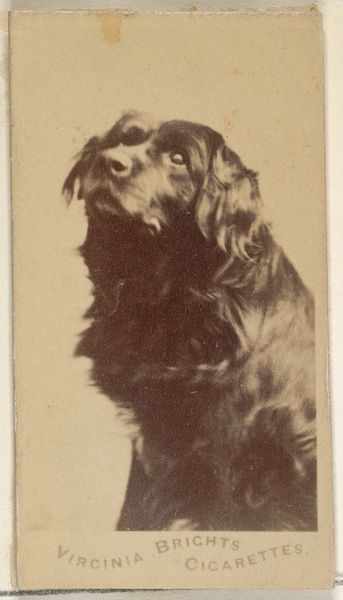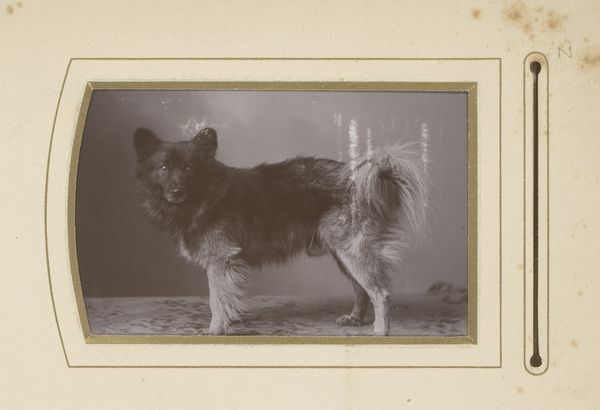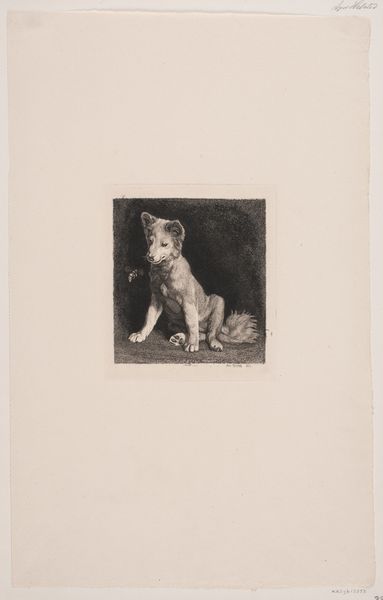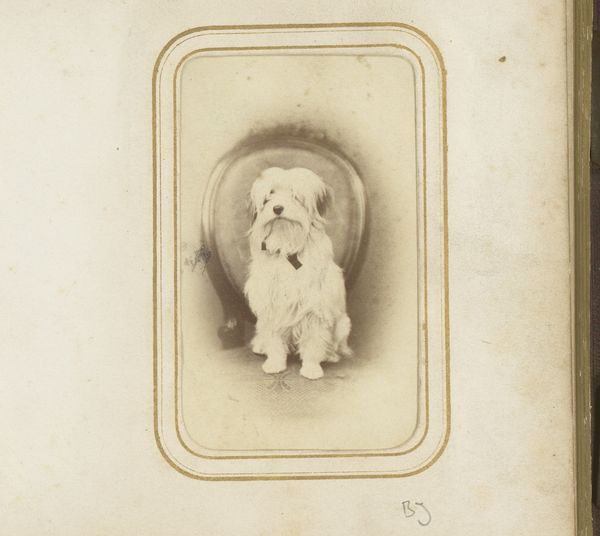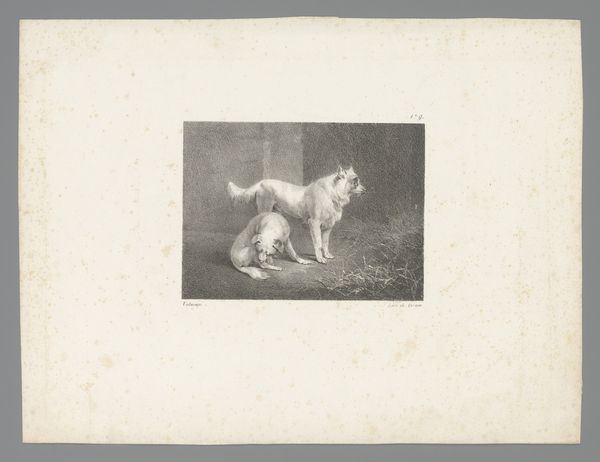
photography, albumen-print
#
portrait
#
dog
#
photography
#
albumen-print
Dimensions: height 165 mm, width 108 mm
Copyright: Rijks Museum: Open Domain
This photograph of a dog was made by Max Büttinghausen in Amsterdam, using the albumen print process. This technique, popular in the 19th century, involved coating paper with egg white and silver nitrate, then exposing it to light through a negative. The resulting image, as you can see, has a distinctive sepia tone and a slightly soft focus. The albumen printing process created a smooth surface, accentuating the tones and textures of the dog's fur and the simple studio setting. It's important to remember that photography at this time was a labor-intensive process, requiring meticulous preparation and handling of materials, including setting up the shot and holding still to expose the image. Büttinghausen's choice of this process speaks to photography's growing intersection with commercial studios, and the new ways in which people wanted to capture images of themselves and their beloved pets. By looking closely at the materials and the making, we can understand the cultural and social values that were embedded in this seemingly simple image.
Comments
No comments
Be the first to comment and join the conversation on the ultimate creative platform.
